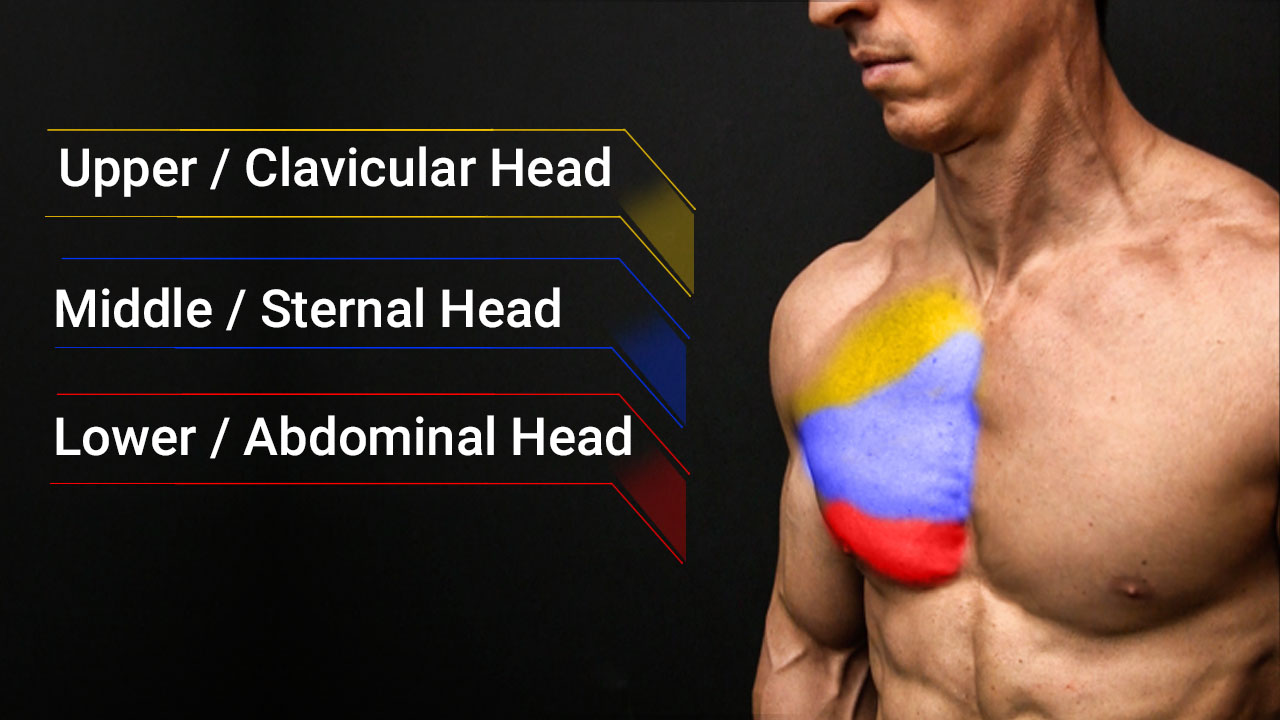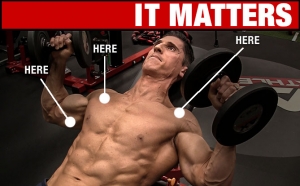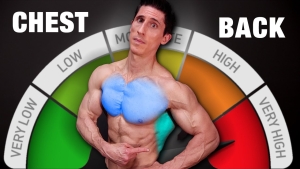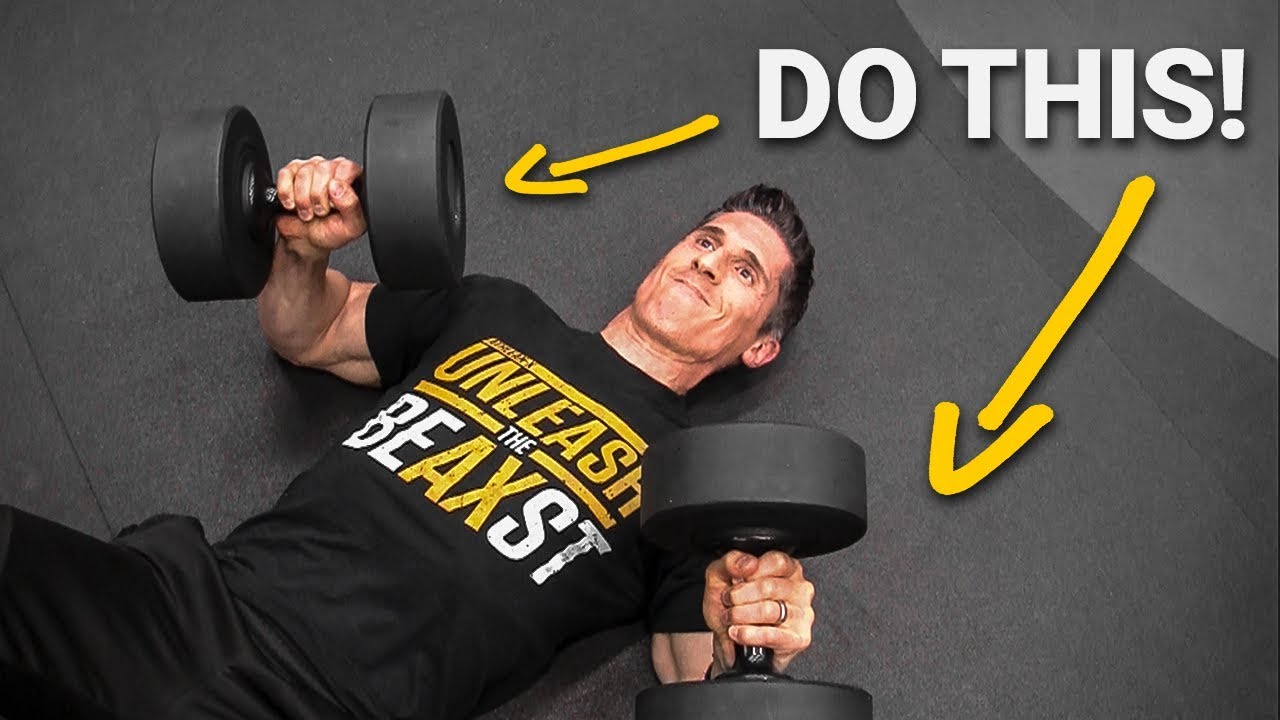
HOW TO INCREASE YOUR BENCH PRESS
I’ve got a question for you. Do you know how to increase your Bench Press?
In other words, which exercise is best for boosting your bench numbers? Is it the traditional Barbell Bench Press? Dumbbell fly exercises? You might be surprised to discover that it’s not either of those!
Today, I’m going to show you how to increase your Bench Press by not doing the Bench Press!
Or not just doing the standard, traditional Bench Press anyway.
Spoiler alert: Your biggest Bench Press gains and your ability to use heavy weights will come from doing accessory movements.
As a matter of fact, you might find the best results come from performing these accessory movements MORE times per week in a given training routine than the Bench-Press itself.
Ready to get started?
Let’s cover the best exercises to increase your Bench Press performance.
ANATOMY OF THE CHEST
Before I jump into how to increase your bench press with accessory exercises, I want to start by breaking down the anatomy of the major upper body muscle: the chest.
As always, guys, it’s important to focus on these chest muscles. Doing so will help you build a stronger mind-to-muscle connection. And you’ll know which upper body exercises to use to target the chest.
Although the pectoralis major is one big muscle, you can break it down into sections, depending on the angle of the exercise you’re doing.
There are a few different ranges you want to target if you want to build a muscular and strong chest.
UPPER CHEST
The muscle fibers that run off the clavicle in the upper section of the chest and down are called the clavicular portion.


MIDDLE CHEST
The middle section of the chest – the sternal fibers – run straight across. These muscle fibers begin at the sternum and move across to your arm.


LOWER CHEST
The abdominal head is a part most people neglect to mention. These fibers run from the bottom part of the chest upward.

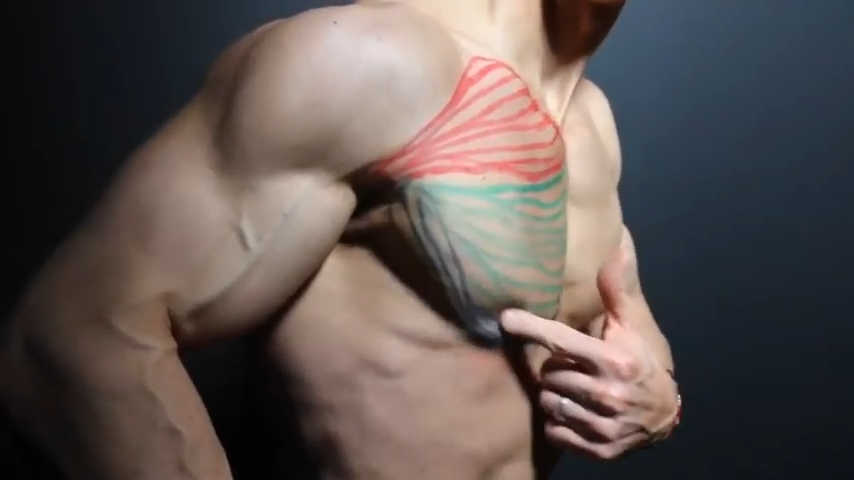
HOW TO INCREASE YOUR BENCH PRESS
There’s a good reason why accessory movements work.
They allow you to work through your weak points during strength training to get better at the overall standard performance of the lift. In other words, you have a more effective lift.
For these exercises, you won’t need additional equipment outside of a basic bench, barbell, and dumbbells.
Let’s go through the additional lifts you’ll want to add into your weekly routine. I’ll cover these supplemental and injury-preventing movements step by step to make sure you can lift without issue.
PAUSE BENCH PRESS
First up is a Bench-Press, but with a variation. This is the Pause-Bench Press.
Because each rep is paused and held in the bottom of the rep, the time under tension will increase but more importantly, the momentum of the rep will be removed.
The stretch shortening cycle will be taken out of the equation and pure upper body strength and leg drive will be responsible for moving the weight off the chest.
With the set-up of the Bench Press, everything’s the same.
Here’s a quick checklist as a reminder of how to bench press correctly:
- Proper form on the bench starts with centering the bar, the bench, and your body. Don’t lean to one side. Maintain a stable body.
- The next step is to use your shoulder stability to create a strong foundation against the bench but do not shrug. Keep your shoulder blades down – focus on shoulder blade activation – to maintain good shoulder health, especially in the rotator cuff.
- Keep your elbows at a 75-degree angle away from the body. Do not flare your elbows or raise them too high.
- Secure your grip from underneath – not over the top. This will help your wrists move into a natural and straighter wrist position.
- Keep that strict form and make sure there is still some bend in your elbow before lifting off.
- As you lower the barbell, maintain a straight diagonal bar path.
All this is the same, but the focus of movement is at the bottom.
Once you bring the weight down, you want to pause. It’s up to you on how long you want to hold the weight before bench pressing back up.

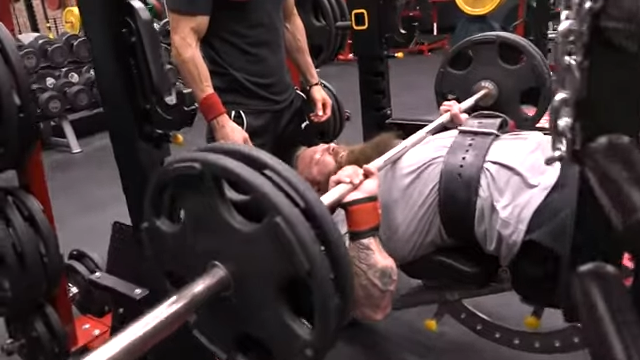
Some guys do three to seven-second pauses, but after seven, I feel like you’ve lost too much momentum. If you let it go too long, you run the risk of the intimidation factor ruining your lift.
To get the barbell to move, you’ll have to tap into that leg drive. Engage your feet and leg drive really hard and rack the weight at the top. You’ll feel like your entire body is getting involved to get that weight back up.
Do it again with a countdown for the seconds before throwing it up and racking it again.
We know that acceleration of the bar is going to be a great tool for incorporating and recruiting more muscle fibers in that, too. So, when you’re in that pause, you’re going to have to recruit a lot of explosive power and force to be able to get out of that hole.
Because it’s done as a reaction to that intimidation of the bar resting on your chest to get it off, the body almost does it automatically.
DUMBBELL FLOOR PRESS
The second exercise for your increasing your Bench-Press is going to be the Dumbbell Floor Press.
This provides us with an opportunity to work the lockout strength portion of the Bench Press to help with a weak point if the triceps are impeding your range of motion from getting into a good, full, strong Bench Press.
This version of benching also has some additional benefits when we employ the dumbbells. The setup is going to be much easier to simply grab some dumbbells and get in position, versus doing it in a rack.
Beyond that, we know that the adduction benefit of the Dumbbell Bench Press is always going to be greater than it is with a barbell.

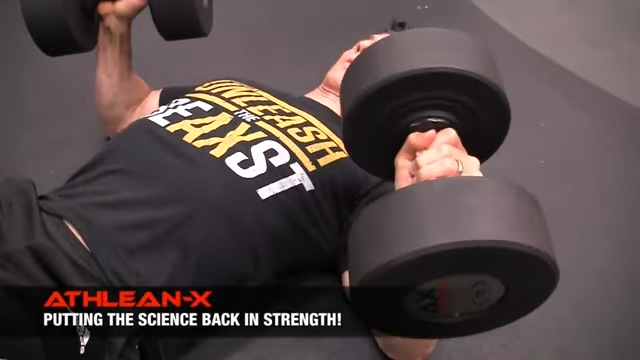
A barbell is going to require a fixed hand placement on a single bar, whereas a dumbbell is allowing us to approach more adduction and more activation of the chest as we bring those dumbbells up to the top.
Additionally, we have a good safety net. Whether we’re using the barbell or a dumbbell, the safety net of the floor decreases the risk of any kind of AC joint injury that we could get from a Bench-Press that goes too low or uncontrolled.
The thing is that you do need to know how to get these dumbbells into position. Maintain good posture as you get the dumbbells and put them on your quads.
Then all you do is get yourself ready by tightening the lats and the upper body, because once you roll back, you have to stay committed.

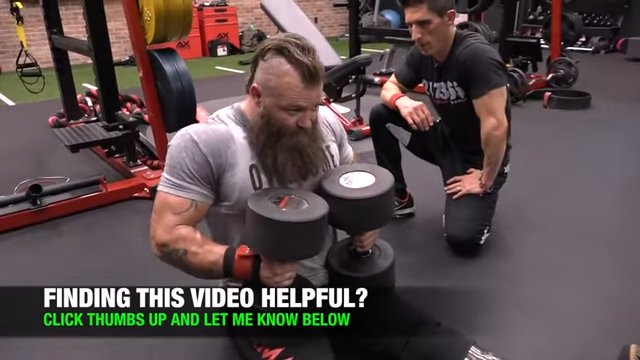
Once you’re on the ground and set up, you press up just like a normal Bench Press. Lower your arms just to the point when your triceps hit the ground and push back up.

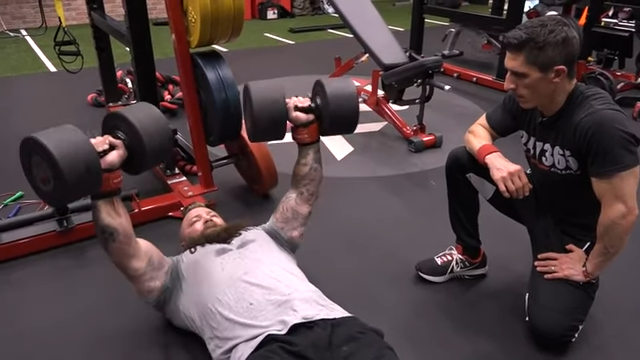
I find that the floor press – barbell or dumbbell – grooves the proper positioning because your elbows stay tucked more naturally than with any other press.
Here’s the thing though, guys, the loads will be a lot lighter. For example, if you’re able to do 300+ pounds on the Barbell Floor Press, you might only be able to do 120 pounds with the Dumbbell Floor Press.
And that’s okay, stick with lighter weights and don’t listen to your ego here.
INCLINE STATIC DUMBBELL PRESS
Our third, and final accessory lift for the Bench Press is the Incline Static Dumbbell Press.
Strength isn’t just necessarily about having more concentric strength. Increasing your ability to control a weight eccentrically is an important part of overall strength development.
Isometric strength and being able to control a weight isometrically are another part of building the overall strength profile.
This exercise combines elements of isometric strength and concentric strength. It also demands the performance of your concentric strength in a fatigued state.

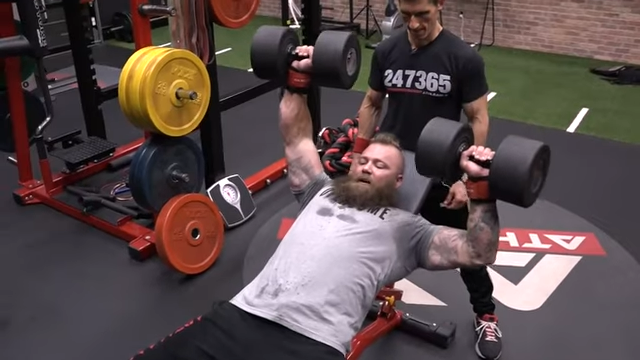
With feet flat on the floor, go up for one, and then bring a single dumbbell down until your upper arm is parallel with the floor. Do NOT lower it all the way down. Keep the chest engaged. Continue with these Dumbbell Presses until you hit your rep goal.
Now, with the arm that’s still in the air, focus doing your reps on that arm only. As far as rep schemes go, perform 5 reps. Then switch to the other side, one arm stays static and the other arm cranks out 5 more reps.

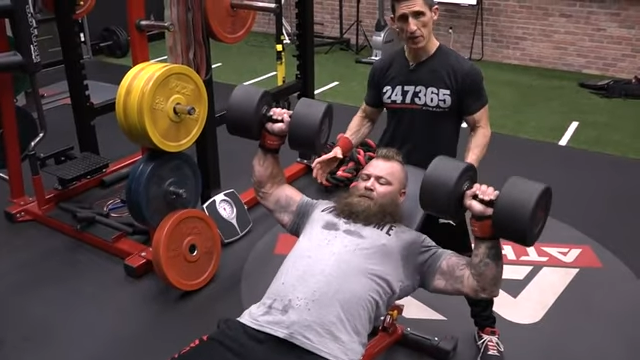
Finally, get both arms involved, and perform a final 5 reps with both arms. The pecs are constantly being challenged here. Even in that bottom position.
The reason this works so well is that in order to hold the weight on the non-moving arm, you must engage your pecs and squeeze. You get a hell of a burn.
Add these accessory exercises into your training routine week after week to see some serious Bench Press gains.
BENCH PRESS TIPS
Right now, you might be wondering, “How much should I bench per week?”
Well, the number of bench sessions you do each week depends on your goals as well as how much time you dedicate to these accessory lifts. Your Bench Press volume during these accessory days should remain consistent. You’re not trying to find your new one-rep max – not yet anyway.
As long as you’re focusing on these accessory exercises, I don’t mind if you throw in an extra bench day to see Bench Press improvements, but don’t forget about rest days as well.
I’d also recommend mixing up your style of bench press from the standard bench to an incline bench and decline bench.
The repetitions for bench pressing comes down to your goals again. Are you going for strength? You’ll probably stay in the 3 to 5 rep range. Want muscle? You’ll stay within 8 to 12 reps.
Finally, what about weight? Since these are accessory movements and they might be new to you, I’d go with lighter loads in the beginning. Save the maximal load for a power day.
Here’s the thing, guys, a bench press workout can incorporate the classic barbell bench press, but it should also include the accessory lifts we discussed above.
You don’t want to have a straight week of bench pressing. Mix it up.
And always remember to practice emphasis on posture during benching. That includes everything from the set-up to elbow lockout.
A progressive overload routine will also be helpful in making steady progress.
That way, every time you have an official Bench Press day in your workout, you can feel confident that you’ll see gains.
The importance of accessory lifts in the pursuit increasing strength and a bigger bench can never be understated.
If you want to lift heavier weight on your Bench Press, you’re going to have to start to use other lifts that help you to work on those weak points to realize the true Bench Press strength you have.
Accessory lifts will break compound exercises down into their individual lifts that target specific portions of that lift individually. And this will allow you to thrive at every single point in that lift.
If you’re looking for a training program that will help you progress your strength and build muscle, you’ve come to the right place. Check to see which our ATHLEAN-X programs best fits your goals.

- The use of accessory lifts in a training program cannot be understated, especially for the Bench Press. Too often, people continue to bang away at the lift they are trying to get stronger on, failing to realize how likely it is that they will not see significant strength gains by continuing to do that.
- The first accessory exercise is the Pause Bench Press. Bring the bar down like a normal Bench Press, then hold it for no more than seven seconds before using leg drive to rack the barbell.
- Next, we have the Dumbbell Floor Press. This move is easy to set up and provides additional stability benefits. Place the dumbbells on your quads, commit to lying back, then push up, not allowing your arms to come down past the triceps touching the floor.
- Finally, Static Incline Dumbbell Presses are an amazing variation that will have high carry over to the bench press. Not only are you learning to develop isometric strength that will compliment your concentric strength on the lift, but you are having to learn how to tap into a deeper well of concentric strength because of the fatigued state that you will find yourself in after the isometric contraction. These are tough but very helpful and will certainly carry over to the pause bench discussed earlier as well.
- To perform the Static Incline Dumbbell Presses, hold one arm at the lower end of a bench press while repping out with the other arm, switch arms, and then finish with both arms.
- Don’t forget to practice and focus on a solid position during benching. Also, give your body plenty of rest with these accessory workouts.

Jeff Cavaliere M.S.P.T, CSCS
Jeff Cavaliere is a Physical Therapist, Strength Coach and creator of the ATHLEAN-X Training Programs and ATHLEAN-Rx Supplements. He has a Masters in Physical Therapy (MSPT) and has worked as Head Physical Therapist for the New York Mets, as well as training many elite professional athletes in Major League Baseball, NFL, MMA and professional wrestling. His programs produce “next level” achievements in muscle size, strength and performance for professional athletes and anyone looking to build a muscular athletic physique.
















